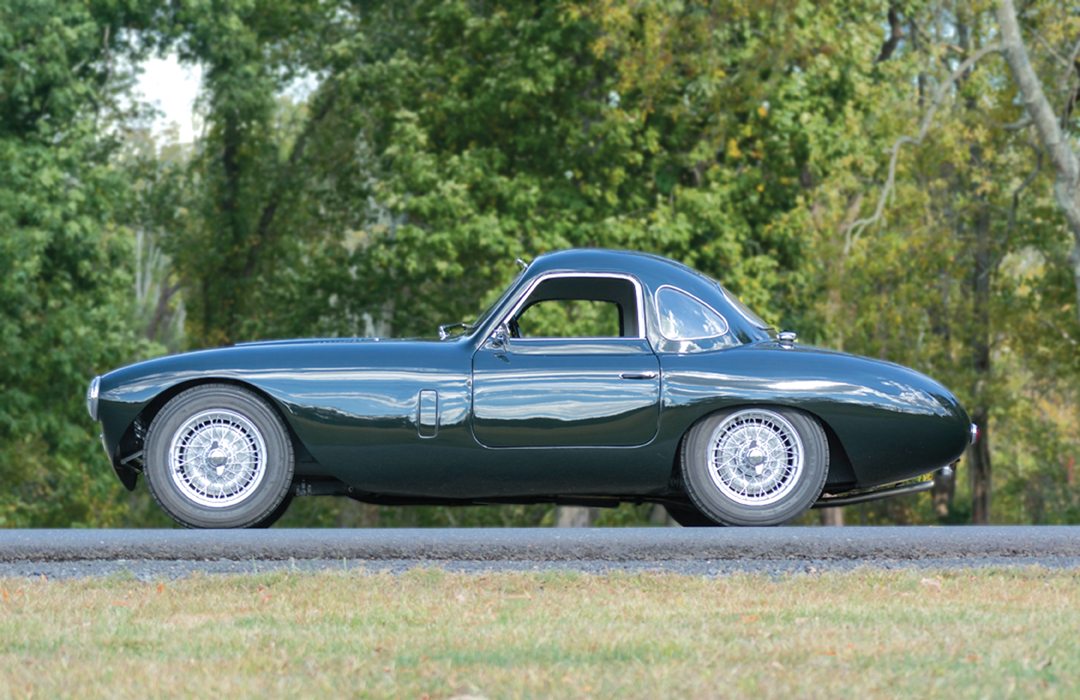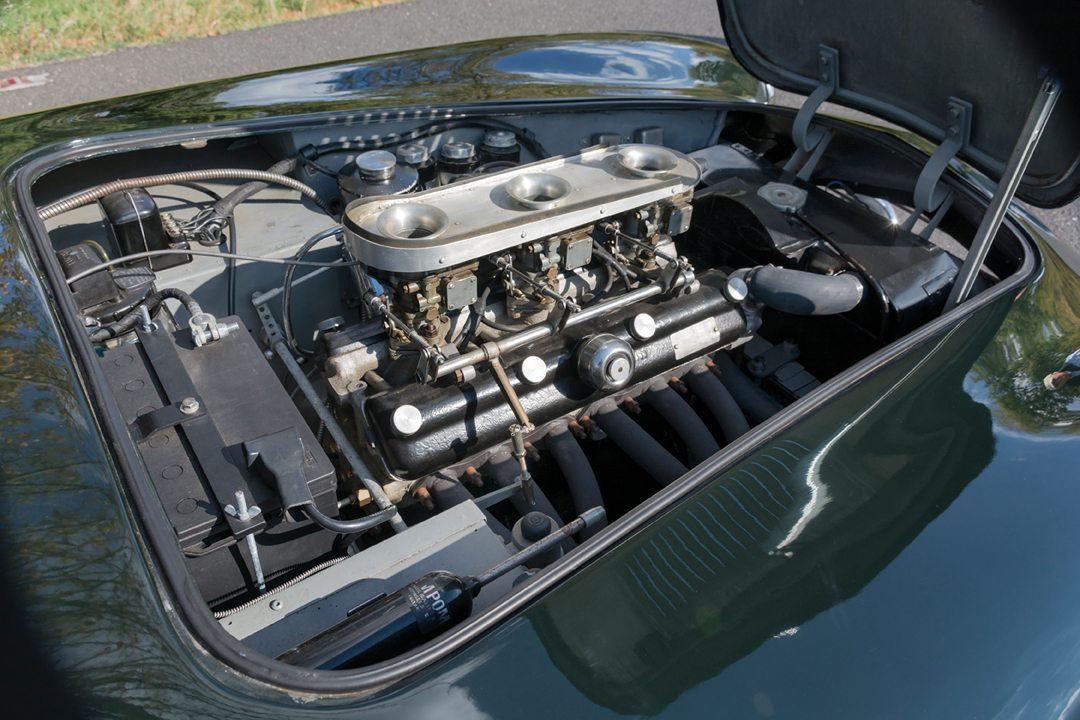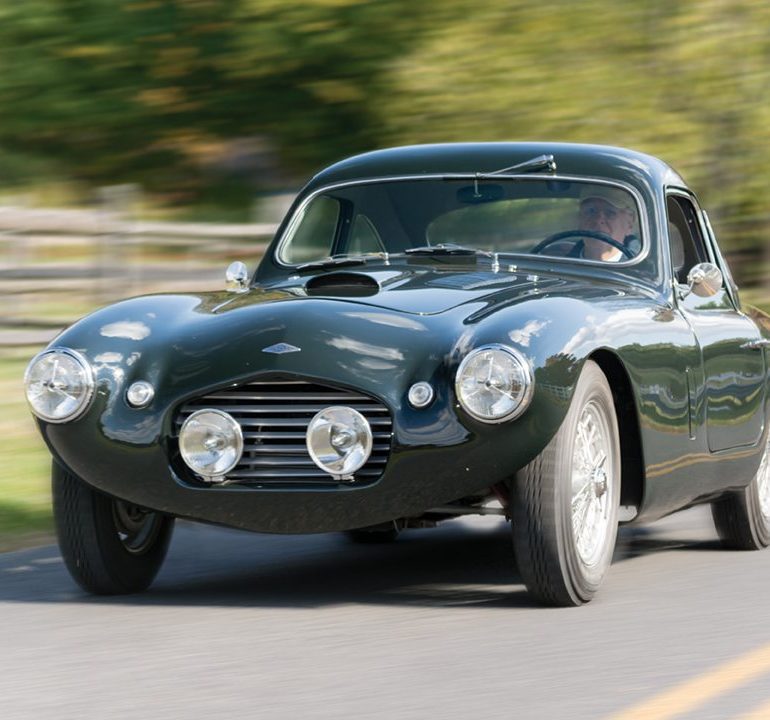Archibald Frazer-Nash started his company in 1922, but found himself in receivership by 1927. From the ashes was born AFN limited, the majority of which was purchased by H.J. Aldington. In the aftermath, Archibald went on to create a new company with E. Grattan Thompson ( Nash&Thompson), which developed hydraulic aircraft gun turrets.

The first car after WWII with the Frazer Nash name still had a great deal in common with the pre-war 328 BMW, including its designer, Fritz Fielder. Fielder came up with a tubeframe chassis, using suspension from both the 328 and 326. Frazer Nash was in the thick of things in post-war racing, Their cycle-fender entry took “Aldy” Aldington and Norman Culpan to a 3rd overall in the 24 Hours of Le Mans. This variant of car was soon known as the “Le Mans replica.” The envelope-bodied car came to be known as the “Mille Miglia” after its success in the famed Italian 1000-mile race. The two styles of Frazer Nash continued to show well at Le Mans over the years. However, the 1953 season brought rule changes that outlawed cycle-fendered cars, as well as new restrictions on windscreen heights. Frazer Nash answered with the “Le Mans Coupe.” The prototype was a modified, envelope-bodied car with a hardtop and larger grill for better cooling. The new car took 13th overall and won the two-liter class outright that year.

Josephus “Jo” Conn Guild Jr. was a businessman from Chattanooga, Tennessee, with a love of handmade sports cars. He paid a visit to AFN’s Falcon works and ordered up a Le Mans coupe of his very own. Being a somewhat oversized individual, he asked that the roof be raised an inch; for better headroom and (as the car was emigrating to the U.S.) the steering wheel was moved to the left side—the only Frazer Nash ever to be built in this configuration. This was to be a road car, but Conn went for the power and requested the 140-hp BS4 engine. Conn received the car in May of 1954. In 1958, after building only 13 more cars, AFN ceased to be an automobile manufacturer.
Not a young man, Conn only kept the car a short time, using it on the roads around his home, before passing it on to his friend J. Frank Harrison. Harrison entered the Frazer Nash in SCCA events in the 1960s for top lady racer Smokey Drolet. Harrison then passed the car on to one of his employees, Mack Williams. The car disappeared for a number of years, finally resurfacing in a “For Sale” ad in the back of a 1966 Road & Track.

Soon after, with a trade for an Offenhauser Indy roadster, the Frazer Nash found its way into the capable hands of Sandy Sadler. Sadler took care of the racing damage and put the car back on the road, running it in the 1999 Colorado Grand. Sadler, a dyed-in-the-wool 356 Porsche guy, found the Le Mans coupe a bit “truckish” for his tastes. The next owner was a bit more in tune with the car’s pre-war personality.
All this aside, on the road, the Frazer Nash is a very well-balanced machine. The steering is neutral with good directional stability, a real compliment to the early rack and pinion steering. You have to work hard to make it go fast, but it is still very much a driver’s 
Specifications
Length 156-inches
Wheel base: 96-inches
Track front: 50-inches
Track rear 52-inches
Height 52-inches (This one only)
Weight 1980 pounds
Engine Straight 6 overhead valve, 2 per cylinder
Size 1971-cc
Bore 66-mm
Stroke 96-mm
Horsepower 140 @ 5750 rpm
Torque 1137 lb-ft @ 3750 rpm
Transmission 4 speed
Compression 9 to 1
Fuel System Triple Solex downdraft carburetors 32BI
Performance
Top speed 121 mph
0-60 mph 8.8 seconds
Average Fuel Consumption 24.5 mpg
Valuation
Excellent $955,000
Good $775,000
Average $600,000





